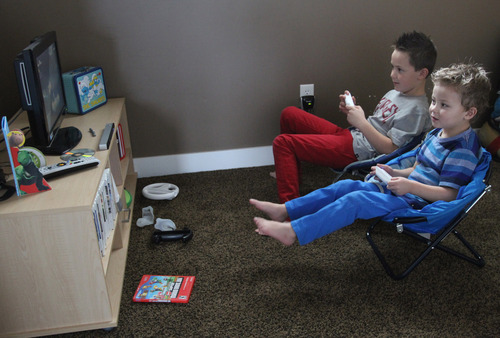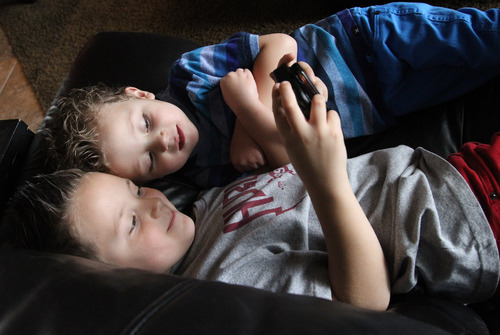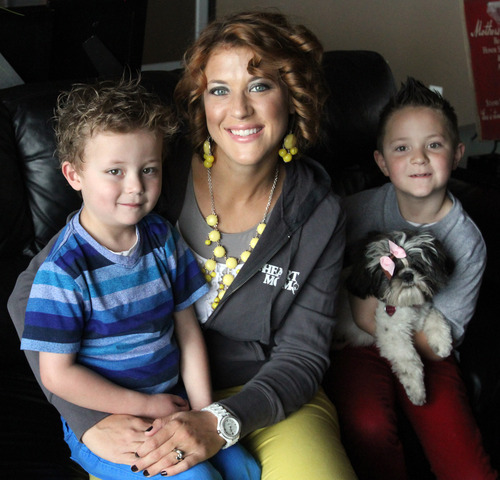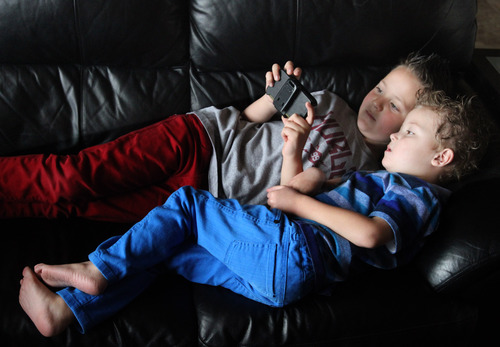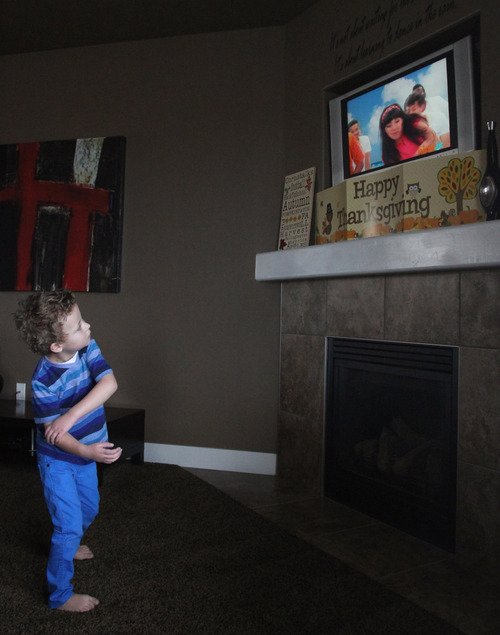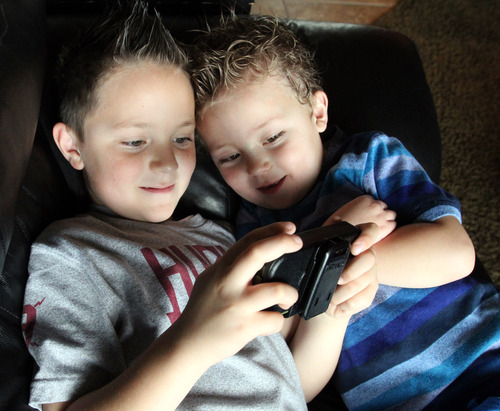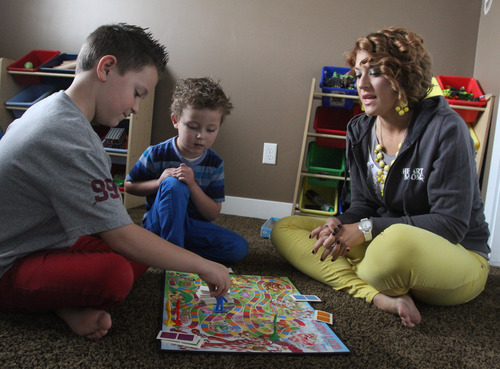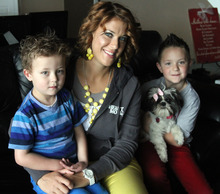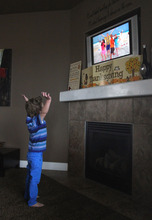This is an archived article that was published on sltrib.com in 2012, and information in the article may be outdated. It is provided only for personal research purposes and may not be reprinted.
Brytten and Ryan Pettit's second son, Teagan, was born at a strapping 9 pounds, 4 ounces and, aside from a little jaundice, was declared healthy and sent home.
But within days, something was off. He wasn't nursing as well as he had. His hands were cold. His breathing was labored.
When Teagan was 4 days old, a pediatrician listened to his "galloping" heart and sent him by ambulance to Primary Children's Medical Center. An echocardiogram revealed a serious heart defect, called hypoplastic left heart syndrome.
Soon, children with such life-threatening problems may get diagnosed before they go home with unsuspecting parents.
Utah is studying how to screen all newborns for seven structural heart defects, just like it tests every infant for rare and life-threatening disorders such as cystic fibrosis and sickle cell disease.
The heart defects would be detected with a pulse oximeter, a noninvasive test in which a sensor is placed on the infants' right hand and a foot to measure how much oxygen the hemoglobin in their blood is carrying.
A federal advisory committee recommended the test in 2010, and the secretary of the U.S. Department of Health and Human Services approved the recommendation last year. The American Academy of Pediatrics also endorsed it last December.
Each state will decide whether to follow the recommendations. New Jersey was the first to sign on last year, and Utah is one of five states studying how to implement it.
—
Early detection crucial • With a $900,000 federal grant, the Utah Department of Health will pilot the screening test at Intermountain Medical Center in Murray and the University of Utah Hospital in Salt Lake City. The state hopes to learn how much it would cost to implement the screening and how to ensure rural newborns get echocardiograms after a failed pulse oximeter test.
The Health Department is also studying how the state's higher altitude would affect the screening results. If it went with national guidelines for pulse oximeter results, there could be too many false positives for problems, said Harper Randall, with the department's Children with Special Health Care Needs Bureau.
"We fully agree that state implementation is important," she said. "We don't want to recommend a system that's going to end up in a lot of inconvenience at very best to these families."
She expects the screening would identify heart defects in 30 to 35 newborns each year.
That's about half the children born with the critical heart defects. Currently, the rest are identified through prenatal care, according to Utah's birth defects database. The state already tracks children who have the seven heart defects, after they've been diagnosed.
It's important to find the newborns as soon as possible. Like with Teagan, some infants will look healthy while in the hospital and only develop symptoms at home.
"If children with these conditions go home with a critical congenital heart defect that is undiagnosed, they can get very sick, very quickly," said Lorenzo Botto, with the Utah Birth Defect Network. "They can die before they can get appropriate care."
The symptoms become obvious. With Teagan's condition, newborns can turn blue and struggle to breathe. Babies with tetralogy of Fallot can lose consciousness.
—
A whole heart • Brytten Pettit, who is the parent representative on the Health Department advisory board looking at the screening, urges her pregnant friends to ask their doctors for the test.
"Every hospital should do it," she said. "It should be part of the newborn screen test."
Her doctor told her Teagan probably developed the defect, in which the left side of his heart didn't fully develop, after she had her 20-week ultrasound.
Finding the defect earlier isn't a guarantee of a healthy life. After Teagan was diagnosed, Pettit remembers being given the option of open-heart surgeries or taking him home to die. Up to 20 Utah children die each year from the conditions.
The now 4-year-old has had two open-heart surgeries — the first when he was a week old — and will need another. He will eventually need a heart transplant.
He uses a feeding tube twice a day. He spent such a long time intubated with a breathing tube that he "lost all joy in eating." He gets blue around his mouth and nose when he plays too hard. He tells his mother that he wants a whole heart; he wants to run as fast as his friends.
But he started preschool this year, something Pettit didn't let herself dream he would ever do. And in every other way he's a typical preschooler.
Pettit, president of Intermountain Healing Hearts, a nonprofit for families and children with congenital heart defects, said the oldest person alive with Teagan's condition is in his or her 30s, so it's hard to know what his future will bring.
"We pray and hope for a bright future, but we just don't know."
Screening newborns
Utah is studying how to screen newborns for seven structural heart defects: Hypoplastic left heart syndrome, tetralogy of Fallot, d-TGA, truncus arteriosus, pulmonary valve atresia, tricuspid valve atresia, and total anomalous pulmonary venous return.
They represent up to 31 percent of all congenital heart disease, and require cardiac surgery or catheterization before age 1.
Source: Centers for Disease Control and Prevention


